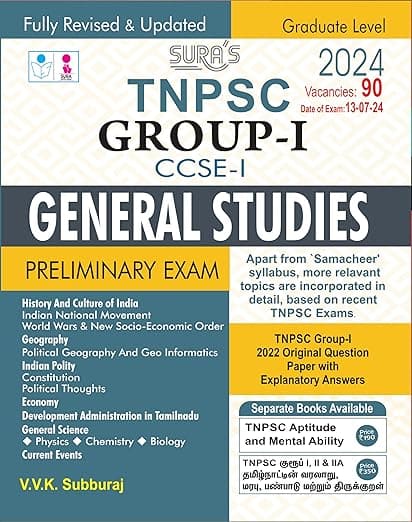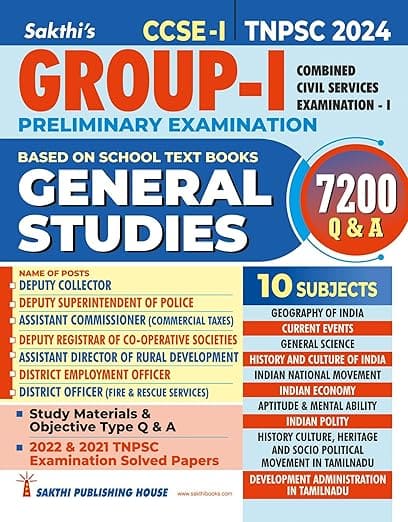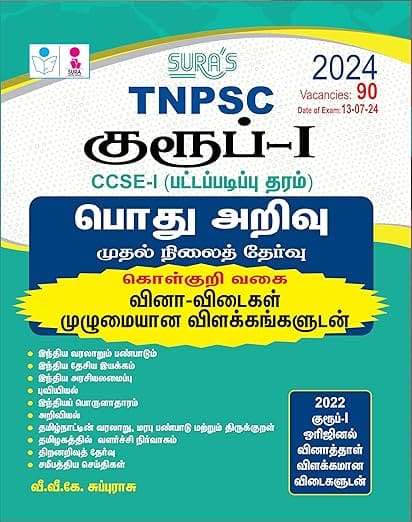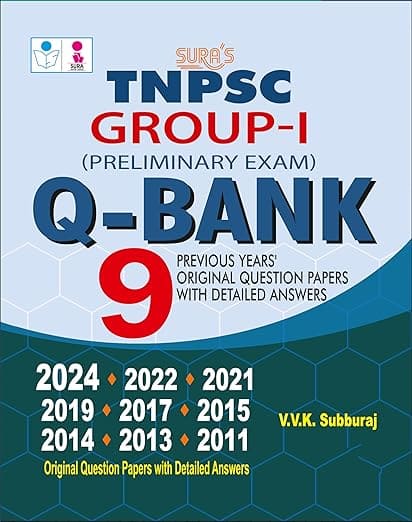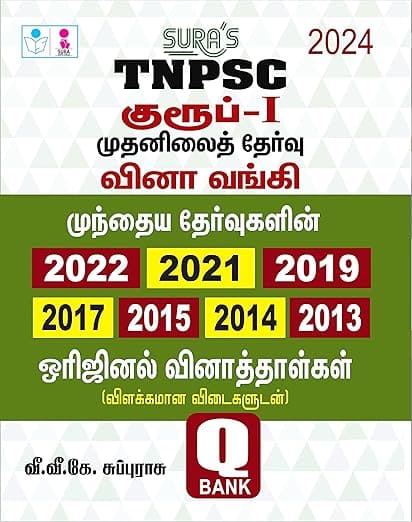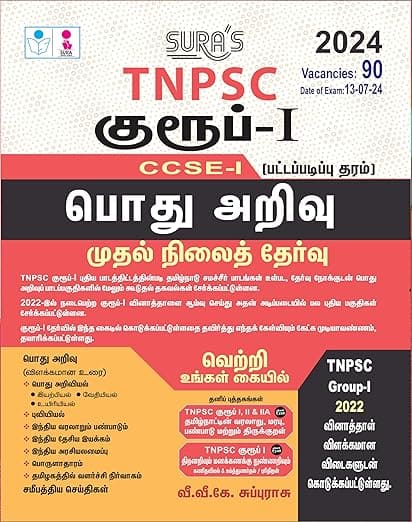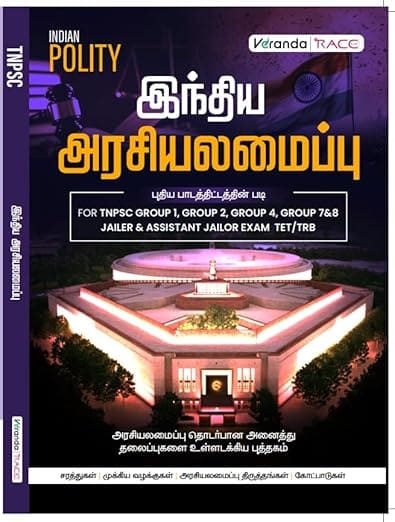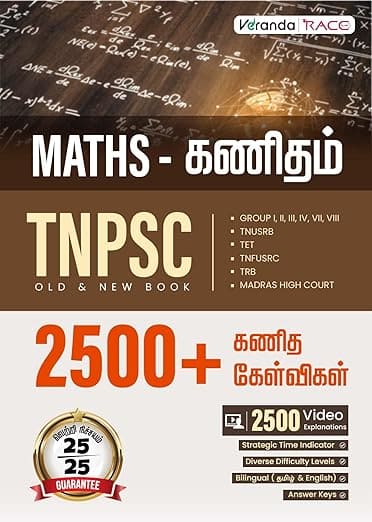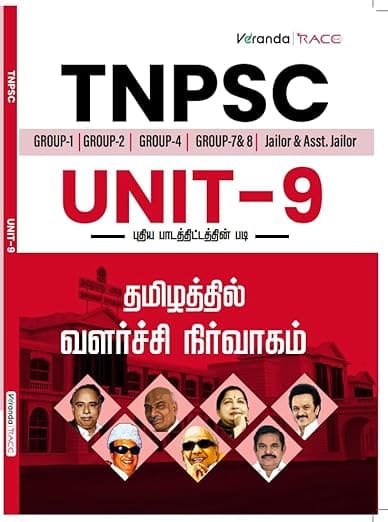New NCERT Books for UPSC
NCERT BOOKS for UPSC Aspirants and CBSE Students are given below.
NCERT BOOKS Class 6
[ NCERT Class 6 ] – NCERT BOOKS for UPSC and CBSE
| Geography
The Earth Our Habitat—Geography |
Contents
- The Earth in the Solar System
- Globe : Latitudes and Longitudes
- Motions of the Earth
- Maps
- Major Domains of the Earth
- Major Landforms of the Earth
- Our Country – India
- India : Climate, Vegetation and Wildlife
|
| History
Our Pasts I—History |
Contents
- WHAT, WHERE, HOW AND WHEN?
- ON THE TRAIL OF THE EARLIEST PEOPLE
- FROM GATHERING TO GROWING FOOD
- IN THE EARLIEST CITIES
- WHAT BOOKS AND BURIALS TELL US
- KINGDOMS, KINGS AND AN EARLY REPUBLIC
- NEW QUESTIONS AND IDEAS
- ASHOKA, THE EMPEROR WHO GAVE UP WAR
- VITAL VILLAGES, THRIVING TOWNS
- TRADERS, KINGS AND PILGRIMS
- NEW EMPIRES AND KINGDOMS
- BUILDINGS, PAINTINGS AND BOOKS
|
| Political Science
Social & Political Life – 1 |
Contents
- Understanding Diversity
- Diversity and Discrimination
- What is Government?
- Key Elements of a Democratic Government
- Panchayat Raj
- Rural Administration
- Urban Administration
- Rural Livelihoods
- Urban Livelihoods
|
| Science |
Contents
- FOOD: WHERE DOES IT COME FROM?
- COMPONENTS OF FOOD
- FIBRE TO FABRIC
- SORTING MATERIALS INTO GROUPS
- SEPARATION OF SUBSTANCES
- CHANGES AROUND US
- GETTING TO KNOW PLANTS
- BODY MOVEMENTS
- THE LIVING ORGANISMS AND THEIR SURROUNDINGS
- MOTION AND MEASUREMENT OF DISTANCES
- LIGHT,SHADOWS AND REFLECTIONS
- ELECTRICITY AND CIRCUITS
- FUN WITH MAGNETS
- WATER
- AIR AROUND US
- GARBAGE IN, GARBAGE OUT
|
NCERT BOOKS Class 7
[ NCERT Class 7 ] – NCERT BOOKS for UPSC and CBSE
NCERT BOOKS Class 8
[ NCERT Class 8 ] – NCERT BOOKS for UPSC and CBSE
NCERT BOOKS Class 9
[ NCERT Class 9 ] – NCERT BOOKS for UPSC and CBSE
NCERT BOOKS Class 10
[ NCERT Class 10 ] – NCERT BOOKS for UPSC and CBSE
NCERT BOOKS Class 11
[ NCERT Class 11 ] – NCERT BOOKS for UPSC and CBSE
| History
Themes in World History |
Contents
- Chapter 1 – Early Societies
- Chapter 2 – Empires
- Chapter 3 – Changing Traditions
- Chapter 4 – Towards Modernisation
|
| Geography
India – Physical Environment |
Contents
- UNIT I : INTRODUCTION
1. India — Location
- UNIT II : PHYSIOGRAPHY
2. Structure and Physiography
3. Drainage System
- UNIT III : CLIMATE, VEGETATION AND SOIL
4. Climate
5. Natural Vegetation
6. Soils
- UNIT IV : NATURAL HAZARDS AND DISASTERS: CAUSES, CONSEQUENCES AND MANAGEMENT
7. Natural Hazards and Disasters
|
| Geography
Fundamentals of Physical Geography |
Contents
- UNIT I : GEOGRAPHY AS A DISCIPLINE
1. Geography as a Discipline
- UNIT II : THE EARTH
2. The Origin and Evolution of the Earth
3. Interior of the Earth
4. Distribution of Oceans and Continents
- UNIT III : LANDFORMS
5. Minerals and Rocks
6. Geomorphic Processes
7. Landforms and their Evolution
- UNIT IV : CLIMATE
8. Composition and Structure of Atmosphere
9. Solar Radiation, Heat Balance and Temperature
10. Atmospheric Circulation and Weather Systems
11. Water in the Atmosphere
12. World Climate and Climate Change
- UNIT V : WATER (OCEANS)
13. Water (Oceans)
14. Movements of Ocean Water
- UNIT VI : LIFE ON THE EARTH
15. Life on the Earth
16. Biodiversity and Conservation
Glossary |
| Political Science
Political Theory |
Contents
- Political Theory: An Introduction
- Freedom
- Equality
- Social Justice
- Rights
- Citizenship
- Nationalism
- Secularism
- Peace
- Development
|
| Political Science
Indian Constitution at Work |
Contents
- CONSTITUTION: WHY AND HOW?
- RIGHTS IN THE INDIAN CONSTITUTION
- ELECTION AND REPRESENTATION
- EXECUTIVE
- LEGISLATURE
- JUDICIARY
- FEDERALISM
- LOCAL GOVERNMENTS
- CONSTITUTION AS A LIVING DOCUMENT
- THE PHILOSOPHY OF THE CONSTITUTION
|
| Economics
Indian Economic Development |
Contents
UNIT I – Development Policies and Experience(1947 – 1990)
1. Indian Economy on the eve of Independence
2. Indian Economy(1950 – 1990)
UNIT II – Economic Reforms Since 1991
3. Liberalisation, Privatisation and Globalisation – An Appraisal
UNIT III – Current Challenges facing the Indian Economy
4. Poverty
5. Human Capital formation in India
6. Rural Development
7. Employment – Growth, Informalisation and Other issues
8. Infrastructure
9. Environment and Sustainable Development
UNIT IV – Development Experiences of India: A comparison with Neighbours
10. Development Experiences of India: A comparison with Neighbours
|
| Society
Understanding Society |
Contents
- SOCIAL STRUCTURE, STRATIFICATION AND SOCIAL PROCESSES IN SOCIETY
- SOCIAL CHANGE AND SOCIAL ORDER IN RURAL AND URBAN SOCIETY
- ENVIRONMENT AND SOCIETY
- INTRODUCING WESTERN SOCIOLOGISTS
- INDIAN SOCIOLOGISTS
|
| Society
Introducing Sociology |
Contents
- SOCIOLOGY AND SOCIETY
- TERMS, CONCEPTS AND THEIR USE IN SOCIOLOGY
- UNDERSTANDING SOCIAL INSTITUTIONS
- CULTURE AND SOCIALISATION
- DOING SOCIOLOGY: RESEARCH METHODS
|
| Physics
Part I |
Contents
- CHAPTER 1 – PHYSICAL WORLD
1.1 What is physics ?
1.2 Scope and excitement of physics
1.3 Physics, technology and society
1.4 Fundamental forces in nature
1.5 Nature of physical laws
- CHAPTER 2 – UNITS AND MEASUREMENTS
2.1 Introduction
2.2 The international system of units
2.3 Measurement of length
2.4 Measurement of mass
2.5 Measurement of time
2.6 Accuracy, precision of instruments and errors in measurement
2.7 Significant figures
2.8 Dimensions of physical quantities
2.9 Dimensional formulae and dimensional equations
2.10 Dimensional analysis and its applications
- CHAPTER 3 – MOTION IN A STRAIGHT LINE
3.1 Introduction
3.2 Position, path length and displacement
3.3 Average velocity and average speed
3.4 Instantaneous velocity and speed
3.5 Acceleration
3.6 Kinematic equations for uniformly accelerated motion
3.7 Relative velocity
- CHAPTER – MOTION IN PLANE
4.1 Introduction
4.2 Scalars and vectors
4.3 Multiplication of vectors by real numbers
4.4 Addition and subtraction of vectors graphical method
4.5 Resolution of vectors
4.6 Vector addition analytical method
4.7 Motion in a plane
4.8 Motion in a plane with constant acceleration
4.9 Relative velocity in two dimensions
4.10 Projectile motion
4.11 Uniform circular motion
- CHAPTER 5 – LAWS OF MOTION
5.1 Introduction
5.2 Aristotle’s fallacy
5.3 The law of inertia
5.4 Newtons first law of motion
5.5 Newtons second law of motion
5.6 Newtons third law of motion
5.7 Conservation of momentum
5.8 Equilibrium of a particle
5.9 Common forces in mechanics
5.10 Circular motion
5.11 Solving problems in mechanics
- CHAPTER 6 – WORK, ENERGY AND POWER
6.1 Introduction
6.2 Notions of work and kinetic energy : The work-energy theorem
6.3 Work
6.4 Kinetic energy
6.5 Work done by a variable force
6.6 The work-energy theorem for a variable force
6.7 The concept of potential energy
6.8 The conservation of mechanical energy
6.9 The potential energy of a spring
6.10 Various forms of energy : the law of conservation of energy
6.11 Power
6.12 Collisions
- CHAPTER 7 – SYSTEM OF PARTICLES AND ROTATIONAL MOTION
7.1 Introduction
7.2 Centre of mass
7.3 Motion of centre of mass
7.4 Linear momentum of a system of particles
7.5 Vector product of two vectors
7.6 Angular velocity and its relation with linear velocity
7.7 Torque and angular momentum
7.8 Equilibrium of a rigid body
7.9 Moment of inertia
7.10 Theorems of perpendicular and parallel axes7.11 Kinematics of rotational motion about a fixed axis
7.12 Dynamics of rotational motion about a fixed axis
7.13 Angular momentum in case of rotations about a fixed axis
7.14 Rolling motion
- CHAPTER 8 – GRAVITATION
8.1 Introduction
8.2 Kepler’s laws
8.3 Universal law of gravitation
8.4 The gravitational constant
8.5 Acceleration due to gravity of the earth
8.6 Acceleration due to gravity below and above the surface of earth
8.7 Gravitational potential energy
8.8 Escape speed
8.9 Earth satellite
8.10 Energy of an orbiting satellite
8.11 Geostationary and polar satellites
8.12 Weightlessness
|
| Physics
Part II |
Contents
- CHAPTER 9 – MECHANICAL PROPERTIES OF SOLIDS
9.1 Introduction
9.2 Elastic behaviour of solids
9.3 Stress and strain
9.4 Hookes law
9.5 Stress-strain curve
9.6 Elastic moduli
9.7 Applications of elastic behaviour of materials
- CHAPTER 10 – MECHANICAL PROPERTIES OF FLUIDS
10.1 Introduction
10.2 Pressure
10.3 Streamline flow
10.4 Bernoulli’s principle
10.5 Viscosity
10.6 Reynolds number
10.7 Surface tension
- CHAPTER 11 – THERMAL PROPERTIES OF MATTER
11.1 Introduction
11.2 Temperature and heat
11.3 Measurement of temperature
11.4 Ideal-gas equation and absolute temperature
11.5 Thermal expansion
11.6 Specific heat capacity
11.7 Calorimetry
11.8 Change of state
11.9 Heat transfer
11.10 Newtons law of cooling
- CHAPTER 12 – THERMODYNAMICS
12.1 Introduction
12.2 Thermal equilibrium
12.3 Zeroth law of thermodynamics
12.4 Heat, internal energy and work
12.5 First law of thermodynamics
12.6 Specific heat capacity
12.7 Thermodynamic state variables and equation of state
12.8 Thermodynamic processes
12.9 Heat engines
12.10 Refrigerators and heat pumps
12.11 Second law of thermodynamics
12.12 Reversible and irreversible processes
12.13 Carnot engine
- CHAPTER 13 – KINETIC THEORY
13.1 Introduction
13.2 Molecular nature of matter
13.3 Behaviour of gases
13.4 Kinetic theory of an ideal gas
13.5 Law of equipartition of energy
13.6 Specific heat capacity
13.7 Mean free path
- CHAPTER 14 – OSCILLATIONS
14.1 Introduction
14.2 Periodic and oscilatory motions
14.3 Simple harmonic motion
14.4 Simple harmonic motion and uniform circular motion
14.5 Velocity and acceleration in simple harmonic motion
14.6 Force law for simple harmonic motion
14.7 Energy in simple harmonic motion
14.8 Some systems executing Simple Harmonic Motion
14.9 Damped simple harmonic motion
14.10 Forced oscillations and resonance
- CHAPTER 15 – WAVES
15.1 Introduction
15.2 Transverse and longitudinal waves
15.3 Displacement relation in a progressive wave
15.4 The speed of a travelling wave
15.5 The principle of superposition of waves
15.6 Reflection of waves
15.7 Beats
15.8 Doppler effect
Answers |
NCERT BOOKS Class 12
[ NCERT Class 12 ] – NCERT BOOKS for UPSC and CBSE
| History
Themes in Indian History Part I |
Contents
- THEME ONE
BRICKS, BEADS AND BONES
The Harappan Civilisation
- THEME TWO
KINGS, FARMERS AND TOWNS
Early States and Economies
(c.600 BCE-600 CE)
- THEME THREE
KINSHIP, CASTE AND CLASS
Early Societies
(c. 600 BCE-600 CE)
- THEME FOUR
THINKERS, BELIEFS AND BUILDINGS
Cultural Developments
(c. 600 BCE-600 CE)
|
| History
Themes in Indian History Part II |
Contents
- THEME FIVE
THROUGH THE EYES OF TRAVELLERS
Perceptions of Society
(c. tenth to seventeenth century)
- THEME SIX
BHAKTI-SUFI TRADITIONS
Changes in Religious Beliefs
and Devotional Texts
(c. eighth to eighteenth century)
- THEME SEVEN
AN IMPERIAL CAPITAL: VIJAYANAGARA
(c. fourteenth to sixteenth century)
- THEME EIGHT
PEASANTS, ZAMINDARS AND THE STATE
Agrarian Society and the Mughal Empire
(c. sixteenth-seventeenth centuries)
- THEME NINE
KINGS AND CHRONICLES
The Mughal Courts
(c. sixteenth-seventeenth centuries
|
| History
Themes in Indian History Part III |
Contents
- THEME TEN
COLONIALISM AND THE COUNTRYSIDE:
Exploring Official Archives
- THEME ELEVEN
REBELS AND THE RAJ:
1857 Revolt and its Representations
- THEME TWELVE
COLONIAL CITIES:
Urbanisation, Planning and Architecture
- THEME THIRTEEN
MAHATMA GANDHI AND THE
NATIONALIST MOVEMENT:
Civil Disobedience and Beyond
- THEME FOURTEEN
UNDERSTANDING PARTITION:
Politics, Memories, Experiences
- THEME FIFTEEN
FRAMING THE CONSTITUTION:
The Beginning of a New Era
|
| Geography
Fundamentals of Human Geography |
Contents
- UNIT I
1. Human Geography
Nature and Scope
- UNIT II
2. The World Population
Distribution, Density and Growth
3. Population Composition
4. Human Development
- UNIT III
5. Primary Activities
6. Secondary Activities
7. Tertiary and Quaternary Activities
8. Transport and Communication
9. International Trade
- UNIT IV
10. Human Settlements
Appendice
Glossary |
| Geography
India – People and Economy |
Contents
- Unit I
1. Population : Distribution, Density, Growth and Composition
2. Migration : Types, Causes and Consequences
3. Human Development
- Unit II
4. Human Settlements
- Unit III
5. Land Resources and Agriculture
6. Water Resources
7. Mineral and Energy Resources
8. Manufacturing Industries
9. Planning and Sustainable Development in Indian Context
- Unit IV
10. Transport and Communication
11. International Trade
- Unit V
12. Geographical Perspective on Selected Issues and Problems
Appendix
Glossary |
| Political Science
Contemporary world Politics |
Contents
- Chapter 1
The Cold War Era
- Chapter 2
The End of Bipolarity
- Chapter 3
US Hegemony in World Politics
- Chapter 4
Alternative Centres of Power
- Chapter 5
Contemporary South Asia
- Chapter 6
International Organisations
- Chapter 7
Security in the Contemporary World
- Chapter 8
Environment and Natural Resources
- Chapter 9
Globalisation
|
| Economics
Macroeconomics |
Contents
- INTRODUCTION
1.1 Emergence of Macroeconomics
1.2 Context of the Present Book of Macroeconomics
- NATIONAL INCOME ACCOUNTING
2.1 Some Basic Concepts of Macroeconomics
2.2 Circular Flow of Income and Methods of
Calculating National Income
2.2.1 The Product or Value Added Method
2.2.2 Expenditure Method
2.2.3 Income Method
2.3 Some Macroeconomic Identities
2.4 Goods and Prices
2.5 GDP and Welfare
- MONEY AND BANKING
3.1 Functions of Money
3.2 Demand for Money
3.2.1 The Transaction Motive
3.2.2 The Speculative Motive
3.3 The Supply of Money
3.3.1 Legal Definitions: Narrow and Broad Money
3.3.2 Money Creation by the Banking System
3.3.3 Instruments of Monetary Policy and the
Reserve Bank of India
- INCOME DETERMINATION
4.1 Ex Ante and Ex Post
4.2 Movement Along a Curve Versus Shift of a Curve
4.3 The Short Run Fixed Price Analysis of the Product Market
4.3.1 A Point on the Aggregate Demand Curve
4.3.2 Effects of an Autonomous Change on Equilibrium Demand in the Product Market
4.3.3 The Multiplier Mechanism
- THE GOVERNMENT: FUNCTIONS AND SCOPE
5.1 Components of the Government Budget
5.1.1 The Revenue Account
5.1.2 The Capital Account
5.1.3 Measures of Government Deficit
5.2 Fiscal Policy
5.2.1 Changes in Government Expenditure
5.2.2 Changes in Taxes
5.2.3 Debt
- OPEN ECONOMY MACROECONOMICS
6.1 The Balance of Payments
6.1.1 BoP Surplus and Deficit
6.2 The Foreign Exchange Market
6.2.1 Determination of the Exchange Rate
6.2.2 Flexible Exchange Rates
6.2.3 Fixed Exchange Rates
6.2.4 Managed Floating
6.2.5 Exchange Rate Management: The International Experience
6.3 The Determination of Income in an Open Economy
6.3.1 National Income Identity for an Open Economy
6.3.2 Equilibrium Output and the Trade Balance
6.4 Trade Deficits, Savings and Investment
Glossary |
| Physics
Part I |
Contents
- CHAPTER ONE – ELECTRIC CHARGES AND FIELDS
1.1 Introduction
1.2 Electric Charges
1.3 Conductors and Insulators
1.4 Charging by Induction
1.5 Basic Properties of Electric Charge
1.6 Coulomb’s Law
1.7 Forces between Multiple Charges
1.8 Electric Field
1.9 Electric Field Lines
1.10 Electric Flux
1.11 Electric Dipole
1.12 Dipole in a Uniform External Field
1.13 Continuous Charge Distribution
1.14 Gauss’s Law
1.15 Application of Gauss’s Law
- CHAPTER TWO – ELECTROSTATIC POTENTIAL AND CAPACITANCE
2.1 Introduction
2.2 Electrostatic Potential
2.3 Potential due to a Point Charge
2.4 Potential due to an Electric Dipole
2.5 Potential due to a System of Charges
2.6 Equipotential Surfaces
2.7 Potential Energy of a System of Charges
2.8 Potential Energy in an External Field
2.9 Electrostatics of Conductors
2.10 Dielectrics and Polarisation
2.11 Capacitors and Capacitance
2.12 The Parallel Plate Capacitor
2.13 Effect of Dielectric on Capacitance
2.14 Combination of Capacitors
2.15 Energy Stored in a Capacitor
2.16 Van de Graaff Generator
- CHAPTER THREE – CURRENT ELECTRICITY
3.1 Introduction
3.2 Electric Current
3.3 Electric Currents in Conductors
3.4 Ohm’s law
3.5 Drift of Electrons and the Origin of Resistivity
3.6 Limitations of Ohm’s Law
3.7 Resistivity of various Materials
3.8 Temperature Dependence of Resistivity
3.9 Electrical Energy, Power
3.10 Combination of Resistors — Series and Parallel
3.11 Cells, emf, Internal Resistance
3.12 Cells in Series and in Parallel
3.13 Kirchhoff’s Laws
3.14 Wheatstone Bridge
3.15 Meter Bridge
3.16 Potentiometer
- CHAPTER FOUR – MOVING CHARGES AND MAGNETISM
4.1 Introduction
4.2 Magnetic Force
4.3 Motion in a Magnetic Field
4.4 Motion in Combined Electric and Magnetic Fields
4.5 Magnetic Field due to a Current Element, Biot-Savart Law
4.6 Magnetic Field on the Axis of a Circular Current Loop
4.7 Ampere’s Circuital Law
4.8 The Solenoid and the Toroid
4.9 Force between Two Parallel Currents, the Ampere
4.10 Torque on Current Loop, Magnetic Dipole
4.11 The Moving Coil Galvanometer
- CHAPTER FIVE – MAGNETISM AND MATTER
5.1 Introduction
5.2 The Bar Magnet
5.3 Magnetism and Gauss’s Law
5.4 The Earth’s Magnetism
5.5 Magnetisation and Magnetic Intensity
5.6 Magnetic Properties of Materials
5.7 Permanent Magnets and Electromagnets
- CHAPTER SIX – ELECTROMAGNETIC INDUCTION
6.1 Introduction
6.2 The Experiments of Faraday and Henry
6.3 Magnetic Flux
6.4 Faraday’s Law of Induction
6.5 Lenz’s Law and Conservation of Energy
6.6 Motional Electromotive Force
6.7 Energy Consideration: A Quantitative Study
6.8 Eddy Currents
6.9 Inductance
6.10 AC Generator
- CHAPTER SEVEN – ALTERNATING CURRENT
7.1 Introduction
7.2 AC Voltage Applied to a Resistor
7.3 Representation of AC Current and Voltage by
Rotating Vectors — Phasors
7.4 AC Voltage Applied to an Inductor
7.5 AC Voltage Applied to a Capacitor
7.6 AC Voltage Applied to a Series LCR Circuit
7.7 Power in AC Circuit: The Power Factor
7.8 LC Oscillations
7.9 Transformers
- CHAPTER EIGHT – ELECTROMAGNETIC WAVES
8.1 Introduction
8.2 Displacement Current
8.3 Electromagnetic Waves
8.4 Electromagnetic Spectrum
- Developing Psychological Skills
Answers
Glossary
Psychology Guidelines |
| Physics
Part II |
Contents
- CHAPTER NINE – RAY OPTICS AND OPTICAL INSTRUMENTS
9.1 Introduction
9.2 Reflection of Light by Spherical Mirrors
9.3 Refraction
9.4 Total Internal Reflection
9.5 Refraction at Spherical Surfaces and by Lenses
9.6 Refraction through a Prism
9.7 Dispersion by a Prism
9.8 Some Natural Phenomena due to Sunlight
9.9 Optical Instruments
- CHAPTER TEN – WAVE OPTICS
10.1 Introduction
10.2 Huygens Principle
10.3 Refraction and reflection of plane waves using Huygens Principle
10.4 Coherent and Incoherent Addition of Waves
10.5 Interference of Light Waves and Young’s Experiment
10.6 Diffraction
10.7 Polarisation
- CHAPTER ELEVEN – DUAL NATURE OF RADIATION AND MATTER
11.1 Introduction
11.2 Electron Emission
11.3 Photoelectric Effect
11.4 Experimental Study of Photoelectric Effect
11.5 Photoelectric Effect and Wave Theory of Light
11.6 Einstein’s Photoelectric Equation: Energy Quantum of Radiation
11.7 Particle Nature of Light: The Photon
11.8 Wave Nature of Matter
11.9 Davisson and Germer Experiment
- CHAPTER TWELVE – ATOMS
12.1 Introduction
12.2 Alpha-particle Scattering and Rutherford’s Nuclear Model of Atom
12.3 Atomic Spectra
12.4 Bohr Model of the Hydrogen Atom
12.5 The Line Spectra of the Hydrogen Atom
12.6 DE Broglie’s Explanation of Bohr’s Second Postulate of Quantisation
- CHAPTER THIRTEEN – NUCLEI
13.1 Introduction
13.2 Atomic Masses and Composition of Nucleus
13.3 Size of the Nucleus
13.4 Mass-Energy and Nuclear Binding Energy
13.5 Nuclear Force
13.6 Radioactivity
13.7 Nuclear Energy
- CHAPTER FOURTEEN – SEMICONDUCTOR ELECTRONICS: MATERIALS, DEVICES AND SIMPLE CIRCUITS
14.1 Introduction
14.2 Classification of Metals, Conductors and Semiconductors
14.3 Intrinsic Semiconductor
14.4 Extrinsic Semiconductor
14.5 p-n Junction
14.6 Semiconductor diode
14.7 Application of Junction Diode as a Rectifier
14.8 Special Purpose p-n Junction Diodes
14.9 Junction Transistor
14.10 Digital Electronics and Logic Gates
14.11 Integrated Circuits
- CHAPTER FIFTEEN – COMMUNICATION SYSTEMS
15.1 Introduction
15.2 Elements of a Communication System
15.3 Basic Terminology Used in Electronic Communication Systems
15.4 Bandwidth of Signals
15.5 Bandwidth of Transmission Medium
15.6 Propagation of Electromagnetic Waves
15.7 Modulation and its Necessity
15.8 Amplitude Modulation
15.9 Production of Amplitude Modulated Wave
15.10 Detection of Amplitude Modulated Wave
|
| Biology |
Contents
- UNIT VI – REPRODUCTION
Chapter 1 : Reproduction in Organisms
Chapter 2 : Sexual Reproduction in Flowering Plants
Chapter 3 : Human Reproduction
Chapter 4 : Reproductive Health
- UNIT VII – GENETICS AND EVOLUTION
Chapter 5 : Principles of Inheritance and Variation
Chapter 6 : Molecular Basis of Inheritance
Chapter 7 : Evolution
- UNIT VIII – BIOLOGY IN HUMAN WELFARE
Chapter 8 : Human Health and Disease
Chapter 9 : Strategies for Enhancement in
Food Production
Chapter 10 : Microbes in Human Welfare
- UNIT IX – BIOTECHNOLOGY
Chapter 11 : Biotechnology : Principles and Processes
Chapter 12 : Biotechnology and its Applications
- UNIT X – ECOLOGY
Chapter 13 : Organisms and Populations
Chapter 14 : Ecosystem
Chapter 15 : Biodiversity and Conservation
Chapter 16 : Environmental Issues
|
NCERT BOOKS for UPSC NCERT BOOKS for UPSC NCERT BOOKS for UPSC NCERT BOOKS for UPSC
Other Importants
NCERT BOOKS for UPSC Aspirants and CBSE Students are given above. kindly refer it…

